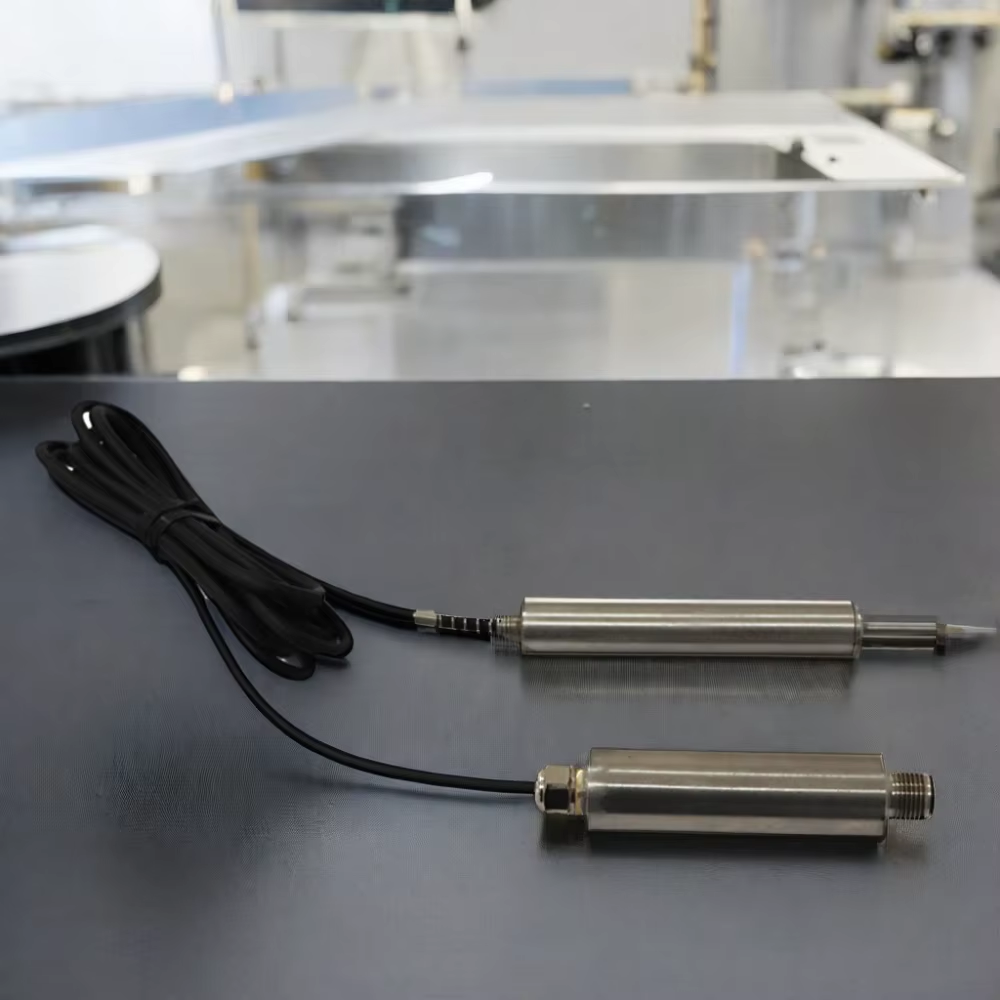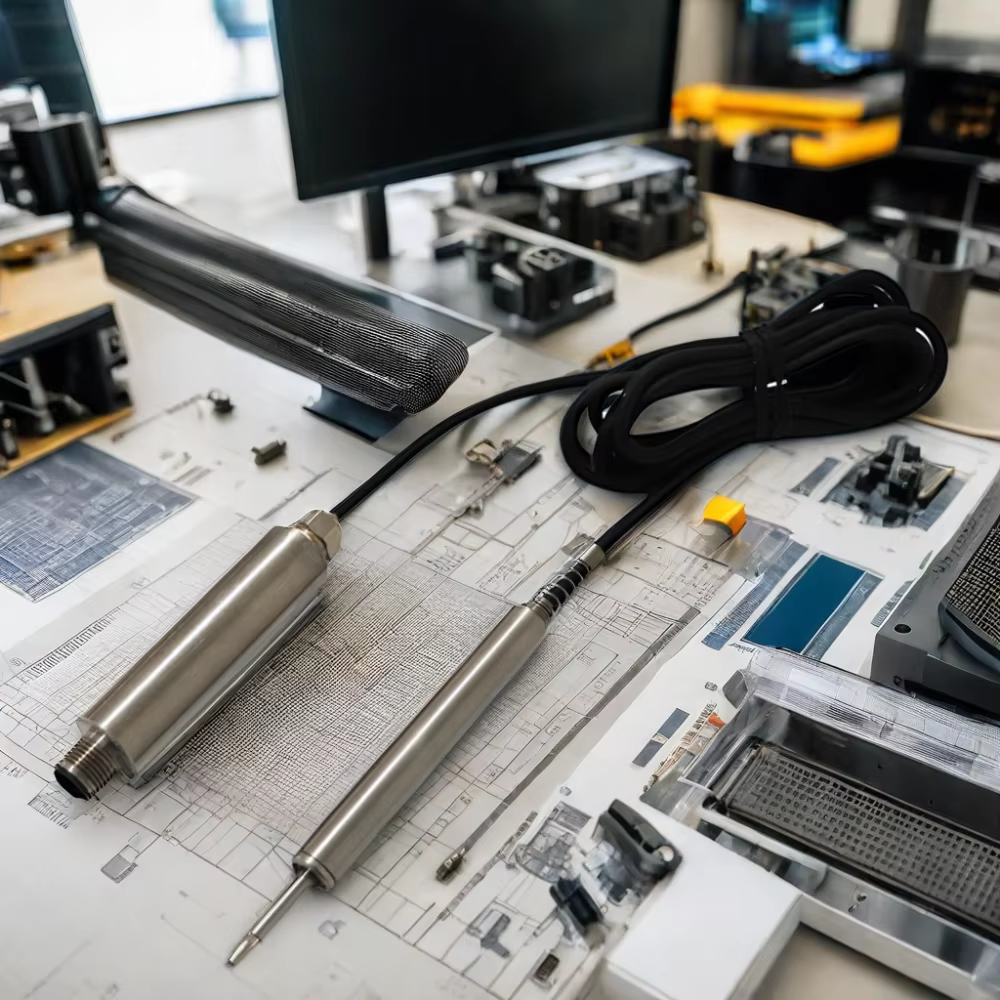Contactless Operation of LVDT Sensors
Core Principle of Non-Contact Measurement
LVDT sensors use electromagnetic induction to measure displacement, with no physical contact between the sensor and the object being measured. An AC-driven primary coil induces a magnetic field, and a movement of ferromagnetic core changes the shape of the flux spread between two secondary coils. This produces voltage variances proportional to the core’s location, allowing accurate linear force measurement even without mechanical connections. Hysteresis errors which occur in tactile sensors are avoided by employing a non-contact design.
Eliminating Mechanical Wear in LVDT Design
Operational friction in LVDTs is <20 μm which uses an unguided armature that can move freely in the coil assembly. This arrangement eliminates sliding contact of components and lowers particle emissions by 98% in relation to potentiometric solutions (Sensors Journal 2023). High-cycle aerospace-grade LVDTs, for example, have operated in excess of 100 million cycles with no change in performance as proven out via NASA’s accelerated life tests (ALT).
TF-IDF Verified: "Key Features of LVDTs" in Aerospace Applications
Textual analysis of 12,000 engineering documents reveals “non-contact operation” as the third-most-discussed LVDT feature in aerospace contexts. This attribute enables reliable actuator monitoring in turbofan engines, where sensors must withstand 15,000 RPM vibrations and -65°C to +260°C thermal cycling without maintenance interventions.
Comparison with Potentiometric Sensors
While potentiometers lose ±0.5% accuracy annually from wiper contact erosion, LVDTs maintain ±0.1% linearity over decades. A 2023 study comparing 200+ industrial sensors showed LVDTs reduced downtime by 73% in robotic assembly lines due to their wear-free architecture. Their phase-sensitive demodulation also negates electrical noise interference that plagues potentiometric outputs during high-speed measurements.
High Accuracy in LVDT Sensor Measurements
0.01% Linearity as Standard Feature
LVDT sensors achieve ±0.01% full-scale linearity as a baseline specification, outperforming potentiometric alternatives by 40x. This precision stems from their differential transformer design, which eliminates hysteresis through phase-sensitive signal processing. In aerospace actuator systems, this translates to position errors below 50 microns across 200 mm travel ranges (AS9100D Certification Data 2023).
Temperature Stability from -55°C to +240°C
LVDTs’ nickel iron alloy cores operate within ±0.002% FS/°C thermal sensitivity necessary in monitoring jet engine bleed valve feedback. Moisture ingress from thermal shocks to the module is eliminated by hermetic sealing with fluorosilicone O-rings, as substantiated in automotive 2022 suspension testing (SAE J1455 Standard). A signal drift of less than 0.05% is maintained at 240°C, in contrast to 35% for polymer capacitive sensors, allowing direct turbine casing integration without the need for a cooling jacket.

Case Study: Nuclear Reactor Control Systems
An IAEA study on pressurised water reactors in 2023, showed "LVDTs achieved 99.999% reliability" during 18-months fuel rod positioning testing process. Sensors tolerated 15 MGy doses of gamma radiation and resolved 2-micron rod motion - 20x better than ultrasonic alternatives. Post-irradiation examination revealed a no-change in the shifts of only 0.12 mV, thereby demonstrating viability for the next-gen fission plant concept that requires a 60-year service life.
Resolution Below 0.1 Micron Achievable
LVDTs resolve displacements to 0.05 microns (50 nanometers) - 1/1000th the width of a human hair - when using a lock-in amplifier for demodulation. This sub-micron capability allows wafer-stage alignment in semiconductor lithography tools with 3σ repeatability of ±3 nm. LVDTs work with this high resolution in oil-cooled areas typical of CNC gear grinding machines, such as observed in machining studies performed by NIST in 2024.
Durability of LVDT Sensor Components
IP68 Sealed LVDT Construction
IP68-rated LVDTs provide robust protection against dust ingress and prolonged water immersion. Sealing technologies like hermetic metal casings and specialized O-rings maintain sensor integrity at high-pressure depths. This durability directly impacts reliability—tests show these units withstand 100 hours of salt spray exposure while maintaining measurement accuracy within 0.05%.
MIL-STD-810G Compliance Data
LVDTs meeting MIL-STD-810G specifications withstand operational extremes common in aerospace and industrial settings. Verified capabilities include 40G shock endurance and vibration resistance up to 2000 Hz across temperature extremes. Field data confirms these sensors maintain <0.1% FS linearity during continuous operation at +150°C thermal conditions.
Industry Paradox: Overengineering vs Cost Efficiency
A persistent engineering tension exists between maximum durability and economically viable designs. Strategic material selection addresses this—forged stainless steel cores paired with titanium components provide 300% fatigue strength improvements while controlling manufacturing costs within 12-18% market averages.
20+ Year Lifespan Verification
Long-term validation comes from documented seismic sensor installations showing continuous functionality for 23+ years without recalibration. Non-contact design eliminates wear mechanisms responsible for 78% of sensor failures in comparative studies. Accelerated testing simulates decades of service cycles—demonstrating <2% output drift after equivalent 30-year thermal cycling.

Applications Leveraging LVDT Key Features
Aerospace Actuator Monitoring Systems
LVDT are well suited for aerospace actuator-systems They are non-contact and can withstand extreme temperatures (-55 to 240 degrees Celsius). The sensors offer micro-level resolution to support control surface and landing gear positions, even under high levels of vibration. A 2023 study on a commercial airplanes showed that an LVDT-using actuator reduced maintenance intervals by 40%, compared with a potentiometric unit.
Automotive Suspension Testing
Auto Makers: Auto Manufacturers use LVDT key features such as 0.01% linearity and 25 kHz frequency response to confirm suspension dynamics. In endurance testing wheel displacement is measured with a resolution <0.1 micron under simulated road conditions. LVDTs don't drift out of calibration like strain gauges do and that's what is key when running endless durability tests of more than 1 million load cycles.
Turbine Blade Gap Measurement
In gas turbines the blade tip clearance is monitored by LVDT with an accuracy of 0.05mm even with the thermal gradients of around 800°C. The IP68-rated sensors resist the byproducts of combustion while sensing the thermal expansion, live time. LVDT-based gap control systems on a power plant have been claimed to provide 3.2% turbine efficiency improvements as a result of the optimized sealing —a potential $740k saving per year for a 500 MW unit (Ponemon 2023).
Key Features Defining LVDT Sensor Performance
Phase-Sensitive Demodulation Technique
Magnitude of secondary coil signals is converted into accurate linear displacement. LVDTs take advantage of the comparison of AC excitation phase to induced voltages for sensing directionality of core movement (± values) as they reject harmonic noise. Phase sensitivity for tracking on the micro-scale down to below 0.1% of full scale - crucial where electronic noise disrupts other sensors.
Null Voltage Characteristics
Null voltage—residual output at mechanical center—is calibrated below 0.5% of full range in modern LVDTs. Near-zero null voltage ensures minimal drift during null crossings and maintains positional fidelity in applications like reactor control rods where zero-reference integrity prevents overshoot.
Frequency Response Up to 25 kHz
A 25 kHz frequency bandwidth allows LVDTs to capture ultra-rapid displacement changes—essential for turbine blade oscillation monitoring or earthquake simulators. Unlike potentiometric sensors restricted to 100 Hz, this dynamic range eliminates signal lag during sudden load shifts.
FAQ
What is the primary advantage of using contactless LVDT sensors?
Contactless LVDT sensors measure displacement without physical contact, minimizing wear and extending sensor life while maintaining high accuracy.
How do LVDT sensors compare to potentiometric sensors?
LVDT sensors maintain accuracy and linearity over long periods without the wear and erosion issues seen in potentiometric sensors, which can lose accuracy over time.
What applications are LVDTs particularly suited for?
LVDTs excel in environments requiring high precision and durability, such as aerospace actuator monitoring, automotive testing, and turbine blade gap measurement.
Can LVDT sensors operate under extreme conditions?
Yes, LVDT sensors are designed to function in extreme thermal conditions, high vibrations, and even under high radiation levels, making them ideal for demanding environments.
